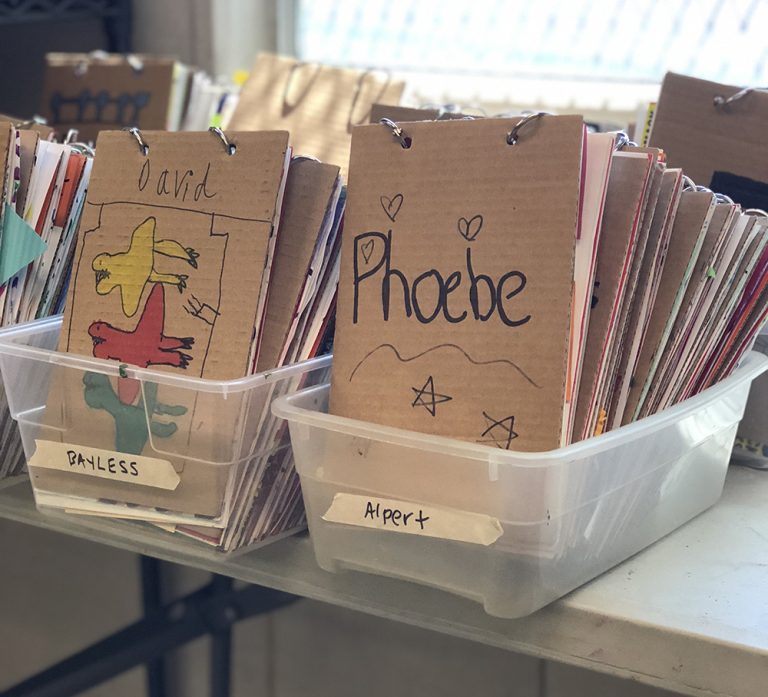Art journaling is a multifaceted practice that extends beyond simple sketching or writing. It is an amalgamation of creativity, self-expression, and exploration that resonates deeply with both novices and seasoned artists alike. The pursuit of learning how to make an art journal is an endeavor that prompts both intellectual and emotional engagement. In an academic exploration of this artistic modality, several key aspects warrant contemplation: the significance of cultivating creativity, the process of reflection and cognitive development, and the therapeutic benefits inherent in the act of journaling.
1. Enhancing Creativity and Artistic Expression
At its core, an art journal serves as a canvas for unrestrained creativity. The act of creating art—irrespective of perceived skill levels—invites individuals to engage with their imaginative faculties. When individuals construct their own art journals, they not only select the materials—papers, paints, and various embellishments—but also decide the themes, structures, and formats that will define their artistic narrative. This process engenders a sense of agency and ownership over one’s creative expression.
Furthermore, art journals can accommodate an array of content types, including illustrations, poetry, and mixed media. This versatility allows for a rich tapestry of expression. Readers can expect to discover how different materials influence artistic outcomes. For example, the tactile experience of working with textured papers can inspire different emotional responses compared to smooth, minimal surfaces. By engaging with varied materials, individuals can explore how each medium dialogues with their inner vision, thereby fostering a deeper understanding of diverse artistic languages.
Having an art journal encourages one to break free from conventional artistic constraints. Artistic expression often grapples with external standards that can inhibit creativity; however, in the sanctuary of a personal journal, there are no right or wrong approaches. This liberated atmosphere nurtures innovative thinking and risk-taking, essential components of creativity. Consequently, learning how to create an art journal becomes a foundational step in unlocking a more profound artistic potential.
2. Reflection and Cognitive Development
The practice of keeping an art journal is equally instrumental in fostering reflective practices and cognitive growth. Journaling promotes metacognitive awareness, allowing individuals to examine and articulate their thoughts and feelings critically. This introspective journey can elucidate the complex interplay between one’s emotions and creative outputs. The act of visually representing thoughts can often lead to new insights, culminating in enhanced problem-solving abilities.
Readers can anticipate discovering techniques for structured reflection within their journals. For instance, prompts that encourage users to analyze personal experiences can stimulate profound cognitive engagement. Consider a prompt such as “Reflect on a pivotal moment in your life and illustrate its impact.” Such an exercise compels the individual to traverse their emotional landscape and visually translate that experience onto the page. This method not only reinforces the cognitive processing of memories but also promotes emotional healing and awareness.
Moreover, the practical skills acquired in art journaling translate into valuable academic competencies, such as critical thinking and organization. The process involves decisions about layout, structure, and the messaging of the content, thus employing strategic planning. Readers can expect to learn how these skills can enhance their academic work, as organizing thoughts visually often leads to more coherent and persuasive arguments.
3. Therapeutic Benefits
The therapeutic potential of art journaling is a subject of burgeoning interest within both psychological and educational realms. Engaging in creative expression can serve as a cathartic release, facilitating an emotional outlet that might otherwise remain unvoiced. Numerous studies underscore the mental health benefits of expressive arts; participants often report decreased anxiety and increased emotional resilience.
Moreover, art journaling can act as a mindfulness practice. Readers can anticipate insights into how this form of creative engagement compels individuals to inhabit the present moment fully. The deliberate process of selecting colors, textures, and imagery becomes a meditative practice, helping individuals to pause and center themselves amidst the perennial chaos of daily life.
Another facet of this therapeutic approach is the community aspect of art journaling. Sharing art journals within supportive environments—such as workshops or online forums—can engender a sense of belonging and understanding among participants. This camaraderie fosters collective growth, prompting individuals to learn from one another’s creative journeys.
4. The Process of Making an Art Journal
The procedural aspect of crafting an art journal is where the alchemy of intentionality meets spontaneity. Individuals can expect to learn various methodologies, including sourcing materials, binding techniques, and artistic styles. This comprehensive approach demystifies the underlying complexities of journal-making, empowering individuals to embark on their creative ventures with confidence.
Techniques such as collage, watercolor layering, and even digital integration can be explored. Artistic choices expand as individuals recognize that the art journal might be as intricate or as simplistic as they desire. The process should be viewed not merely as an end in itself, but rather as an evolving journey that reflects personal growth and artistic evolution.
In conclusion, understanding how to make an art journal extends beyond the confines of artistic skill. The merits encompass the enhancement of creativity, cognitive development, therapeutic benefits, and an intricate appreciation of the creative process itself. As individuals engage with and explore the multifarious dimensions of art journaling, they invariably unlock deeper layers of self-awareness and expression. An art journal is not just a repository of images and thoughts; it is a reflection of the self, an exploration of the psyche, and ultimately, a celebration of human creativity. The importance of learning how to create one lies not only in the final product but in the journey of creativity itself.












